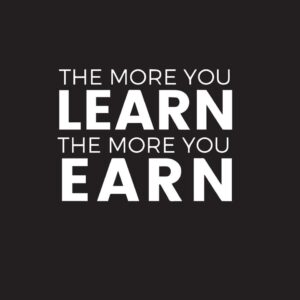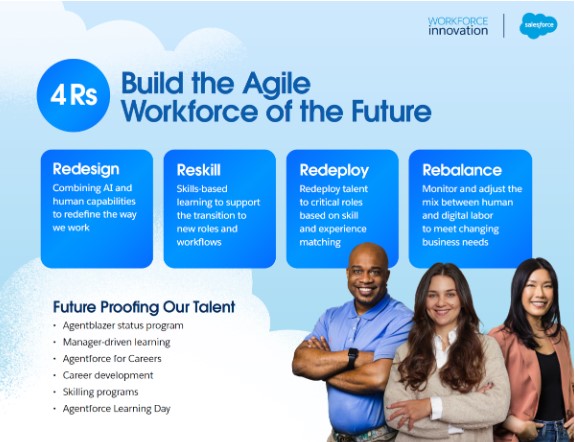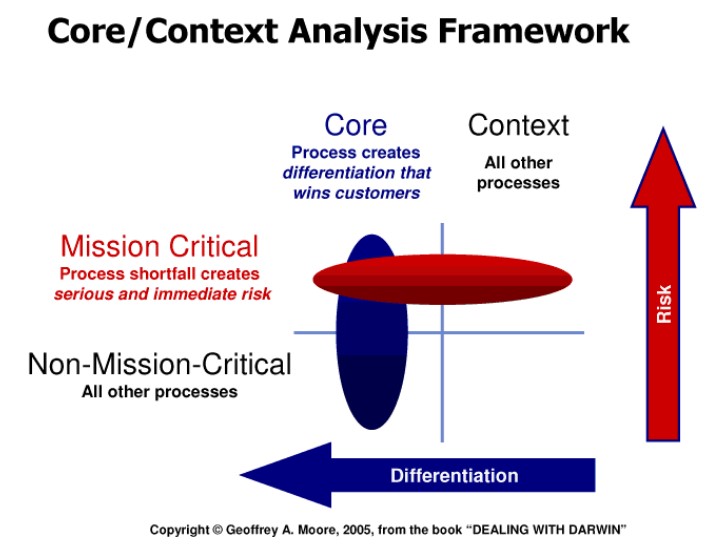
September 23, 2025
In the digital world,
“you earn what you learn”

“The saying “you earn what you learn” emphasizes the connection between acquiring knowledge and skills and increasing one’s earning potential. It suggests that investing time and effort in learning, whether through formal education, on-the-job training, or personal development, can lead to greater opportunities and higher income.”
Learning how AI, Gen AI, & Agentic AI and humans can work together
The widespread emergence of AI, GenAI, and Agentic AI is forcing both companies and their employees to access what are the new and ever-changing skills and capabilities they need to successfully compete as a digital enterprise.
The emergence of AI in all its forms has also created an avalanche of predictions that it will replace up to half of all the jobs that exist today. While this fear is real and understandable, I think it is misplaced and self-defeating.
AI works best not when it replaces humans but when it augments them. Thomas W. Malone, Director of the MIT Center for Collective Intelligence (CCI) puts it this way: “Combinations of humans and AI work best when each party can do the thing they do better than the other party. It’s not about dividing tasks linearly between humans and machines, but redesigning the entire process so they can collaborate effectively.” For both leaders and employees alike, the key is to learn how people and intelligent technology can co-create business value across every function.
A recent Harvard research study shows a strong link between the skill of leading human teams and the skill of incorporating multiple AI agents as part of the team. The same leadership principles of setting clear goals and expectations and holding everyone accountable for achieving the desired outcomes applies to both humans and machines.
The study also showed that leaders who succeed will learn how to treat AI agents not as magical black boxes, but as capable yet fallible teammates: giving them clear objectives, the right roles, structured onboarding, iterative coaching, and informed trust.
A new operating model: The human-agent hybrid workforce

While media coverage is focused on AI-driven layoffs, several forward-thinking companies are deploying the technology to augment their workforce, not replace it.
Mary Alice Vuicic, Chief People Officer at Thomson Reuters, says “companies are ripping up their AI plans when Agentic AI emerged and moved on from employees using the technology as an assistant to being a team that works together to accomplish delegated tasks. Our strategy incorporates both because AI isn’t just another technological tool but a fundamental change to how people work. It’s equal parts change management, workforce upskilling and technology. And that’s the key to unlocking both productivity and augmentation.”
Thomson Reuters has also deployed its Open Arena platform which provides employees with access to 35 Large Language Models (LLMs) where they can experiment with everything from summarizing documents to building custom workflows. It also lets them connect GenAI models to a wider ecosystem of applications and tools. The platform now has over 19,000 monthly users.
Parsons, a defense and critical infrastructure engineering firm, is deploying AI agents for efficiency improvements and cost reductions along with building AI into its products and services. Jenn Bergstrom, VP of Cloud & Data, says that while the cultural issues are complex and challenging, the company’s focus has been on augmenting employees not replacing them.” Parsons is investing in upskilling and training programs, running gamification events around AI including cash prizes and paying bonuses to employees who get AI certifications. “Our retention numbers are better than they’ve been in over a decade.”
Salesforce has developed their own Workforce Innovation Playbook: A Guide to Human + AI Collaboration. It outlines their strategy for how they work, how they will address skills gaps and will identify shifting job roles to ensure a successful collaboration. Their 4Rs program as shown on the slide below is designed to build an agile and adaptable workforce for the future.

Andy White SVP of Business Technology at Salesforce say “AI agents are valuable across sales, service, marketing, IT, HR and really all business teams. There is high potential in streamlining the sales funnel, real-time data analytics, personalized customer experience, employee onboarding, incident resolution, fraud detection, financial compliance, and supply chain optimization.”
Use GenAI & Agentic AI to automate context functions to free up humans to do mission critical core functions

My brother, Geoffrey Moore, developed the Core & Context framework to draw clear distinctions between the different types of work employees are engaged in across enterprise. As he states:
- Core are those activities (e.g. product development & sales) that increase a company’s sustainable competitive advantage and directly impact the operating and financial performance of the company. The goal is to create true differentiation by giving customers what they want and cannot get from anyone else.
- Context are all other activities (e.g. finance & legal) that must be done but do not directly drive increased revenues, margins, and profits. The goal is to, whenever possible, outsource context work in order to redeploy resources, time, and budget against core work.
Based on my work with dozens of companies over the past 20 years, I have seen first-hand that from the C-Suite on down, individuals spend 80% of their time on context and 20% of their time on core. The key to this approach is to fully understand where to combine what humans do best with what machines do best.
A recent McKinsey field research study involving more than 2,300 people working with AI agents showed these results:
- Communication within teams increased by 137%
- Employees spent 23% more time on idea generation (core) & 20% less time on editing (context)
- There was a 60% increase in productivity per worker and a significant improvement in the quality of the creative output
AI did what it does best, which in turn freed up humans to do what they do best.
The first step is to clearly identify high-volume, low-value context tasks across the organization where time and talent are being drained.
The next step is to identify pilot use cases where employees and AI agents can work together to see if they can rebalance how the work is done between them. They can learn from the results of these early pilots to refine their collaborative approach going forward. This approach ensures Agentic AI adoption is sustainable and delivers real business value without overwhelming teams and disrupting existing workflows.
Lastly, governance and oversight are critical in maintaining a human-in-the-loop approach for mission critical core decisions that directly impact customer experiences, security, and regulatory & compliance risk.
As entrepreneur Mark Cuban says, “AI won’t replace humans rather it will empower the ones who know how to harness the technology and work with it. At the end of the day, AI is a multiplier, use it, but don’t be used by it.”
|


